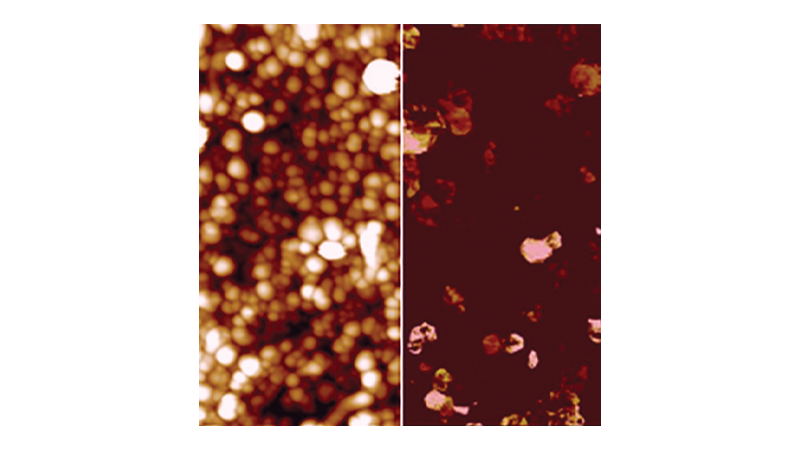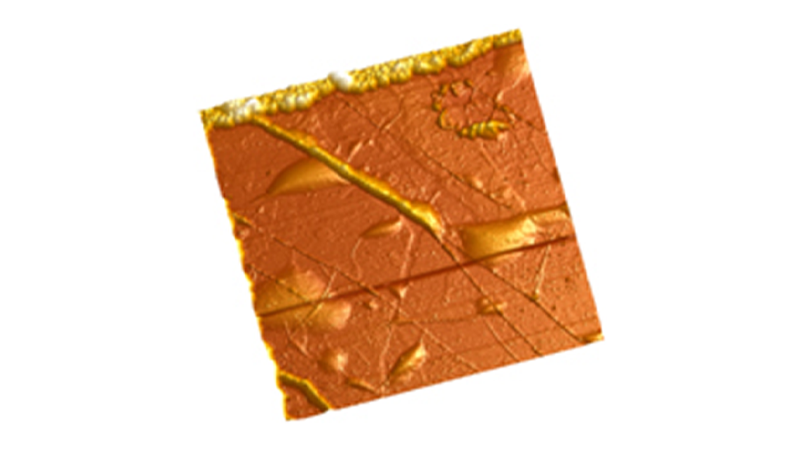PeakForce pc-AFM and KPFM for understanding charge transport mechanism in solar fuels research
Nature Communication (2018), 9, 2597.
Producing fuels from sunlight, water and carbon dioxide may provide a path to addressing the grand challenges of clean energy and climate change. Sunlight-driven water splitting is a key step in the fuel-forming reactions process. BiVO4 holds promise as an efficient semiconducting photoanode material, but its experimentally measured conversion efficiency has been falling far short of the theoretical limit. Toma and Eichhorn lay out a quantitative analysis of sub-pA AFM current maps and IV curves acquired with PeakForce TUNA under illumination with careful consideration of the nanoelectric contact. They show that charge transport in BiVO4 is best described by a space charge limited current model and is limited by a high density of shallow traps.
Furthermore, they find no recombination sites at grain boundaries, indicating a high defect tolerance, and raising the enticing possibility of high conversion efficiency in the presence of internal interfaces. Complementing Toma’s previous EC-AFM investigation of in situ BiVO4 morphology changes under water splitting conditions (Nature Communication, 2016, 7, 12012), the present work brings researchers another step closer toward the exciting goal of creating fuel from sunlight. As stated by Toma (LBL News Release, July 18, 2018), a possible next step is the measurement of photoconductivity under liquid electrolyte.


